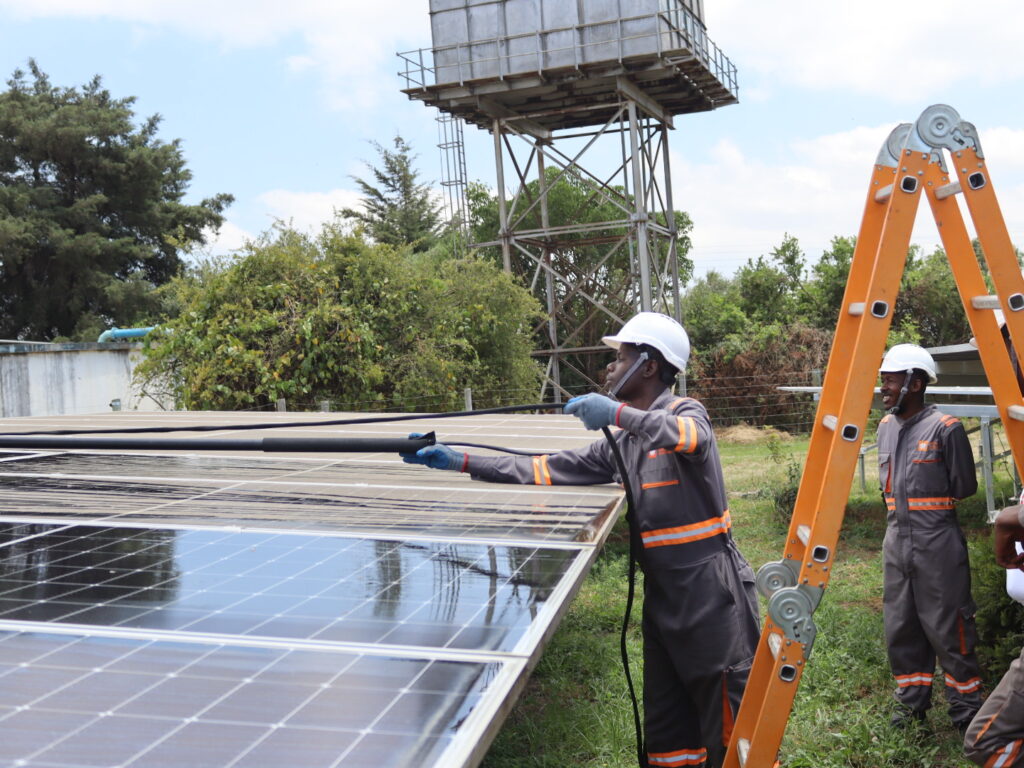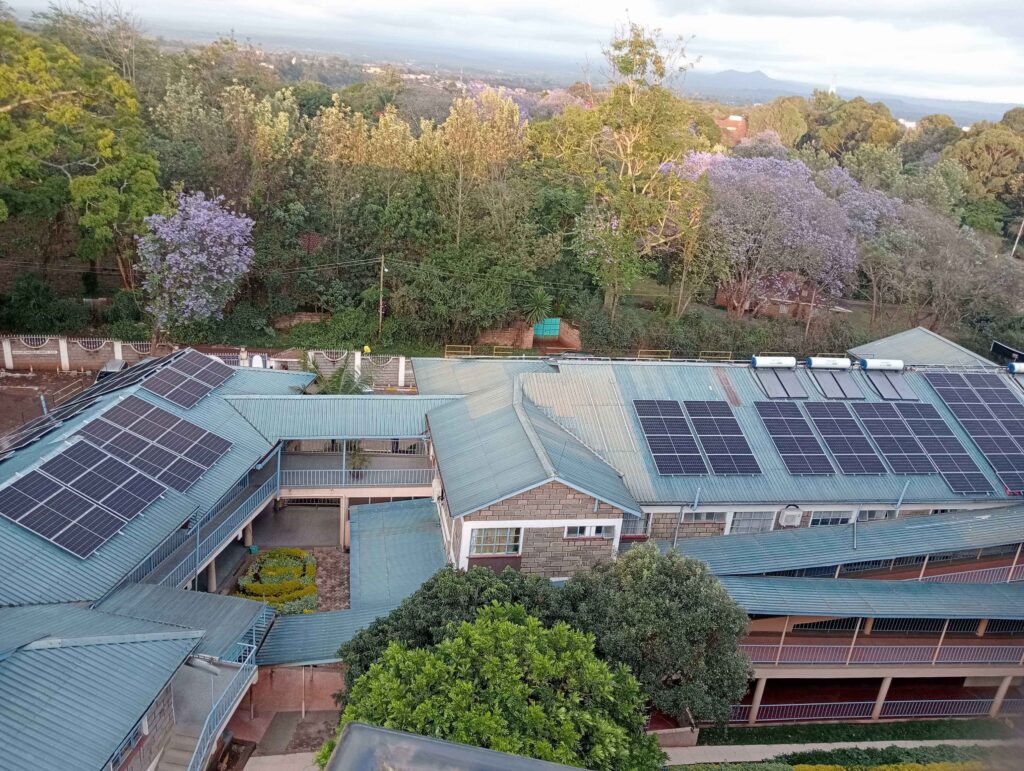When the Kenyan Ministry of Energy and Petroleum released the Kenya National Electric Cooking Strategy (KNeCS) in 2024, the move was hailed as historic. Kenya became the first country in Africa to publish a national strategy aimed at replacing biomass with electric cooking.
But beneath the glowing headlines, a glaring oversight exists, one that threatens to derail the country’s clean energy transition.
The 2024 strategy, which lays out plans to convert at least 10% of household cooking to electricity by 2028, devotes almost no attention to institutional cooking. In an unobtrusive oversight, the strategy marginalizes a key sector that could dramatically accelerate national clean cooking goals, institutional kitchens schools, hospitals, prisons, universities, and boarding facilities across the country.
“We cannot decarbonize our kitchens by focusing on households alone,” says Stephen Adwong’a, CEO of Miale Solar, a clean energy company pioneering solar cooking technologies in Kenya. “Institutions are some of the biggest users of firewood and charcoal. Ignoring them is like trying to drain the ocean with a spoon.”

The Invisible Polluter in Plain Sight
While the KNeCS correctly identifies that 68% of Kenyan households still cook using firewood, charcoal, or kerosene, it does not offer a roadmap for how the country’s over 20,000 boarding schools, thousands of hospitals, and dozens of prisons should transition to electric or clean energy alternatives.

The current strategy acknowledges the potential of “institutional eCooking” but only as a research and development objective, without offering a roadmap for implementation or funding. This oversight undermines Kenya’s commitment to universal clean cooking accessby 2028 as envisioned in its Clean Cooking Compact.
Kenya’s schools, hospitals, prisons, and boarding facilities remain heavyweight consumers of biomass fuels. A 2018 Clean Cooking Alliance report and subsequent Ministry of Energy findings indicate that over 91% of schools still rely on firewood, and most health facilities and prisons cook using inefficient charcoal stoves or open fires.
Educational, health, and correctional institutions in Kenya commonly rely on traditional cooking fuels. The annual consumption of firewood in these institutions is estimated to be approximately 1.3 million tons. For an average primary school, the annual consumption is estimated to be between 64 tons and 164 tons when utilizing improved and traditional stoves, respectively leading to an annual consumption ranging from 2.8m and 6.9 million tons by 43,076 primary and 50 secondary schools in Kenya. These institutions consume tons of biomass weekly, contributing significantly to deforestation and greenhouse gas emissions, yet they barely receive mention in the KNeCS.
But it’s not just environmental. Health is on the line too.
Institutional cooking doesn’t just pollute, it kills. A study by the Ministry of Health estimates that 21,500 Kenyans die prematurely each year due to indoor air pollution, much of it stemming from biomass cooking in enclosed spaces like school kitchens. A report from the Stockholm Environment Institute (2016) reveals that acute lower respiratory infections are the second leading cause of death in Kenya, accounting for 26% of all reported deaths in Kenyan hospitals. The health burden on kitchen staff is enormous and underreported.

Environmentally, the contribution is staggering. Biomass use in institutions accounts for a significant fraction of the 40% of national GHG emissions attributed to cooking, according to the KNeCS Baseline Study 2023. Moreover, schools in arid and semi-arid lands must often buy firewood at exorbitant prices or depend on illegal logging, accelerating land degradation.
Economically, schools and hospitals that rely on biomass cooking face rising costs and operational inefficiencies. Schools are by far the most significant consumers of fuel. About 90 percent of public schools use firewood for cooking and pay up to US$20,000 per year for the wood. This makes cooking fuel one of the biggest expenses in schools’ meal budgets.
Case of Kenswed School and the Miale Solar Model
While the government strategizes, Miale Solar is already doing. At Kenswed Secondary School in Ngong, Miale Solar implemented a pilot system combining grid-tied solar panels and electric pressure cookers. The school installed two 200-litre electric cooking pots, powered by a 24kW solar PV system.

The results were revolutionary. Cooking time reduced by at least 50%, and schools reported significant savings of between 20-50% in fuel costs. But more importantly, the intervention offered proof that solar-powered institutional cooking is not only viable, it’s transformative.
Kitchen air quality dramatically improved. Kitchen staff who once choked on smoke now operate in clean, quiet environments. “Now rice is ready in less than 15 minutes. And there’s no smoke,” says the school’s cook.
This is not just innovation, it’s transformation.
Lessons Afield. What Rwanda and Zambia Are Doing
Zimbabwe, under the UNDP’s Solar for Health program, is powering clinics and health centers, reducing their dependence on firewood for sterilization and food preparation.
Kenya is not alone in grappling with institutional energy needs.
Rwanda’s National Strategy for Transformation targets zero use of biomass in public institutions by 2030, with measurable progress already being made.
Zambia, with support from the World Bank, has begun solarizing rural schools and clinics as part of a national program—recognizing that reliable energy in schools not only improves learning but also improves teacher retention. Zambia has also initiated a clean energy transition in public schools, installing solar-powered systems in over 1,000 rural learning institutions.
Kenya risks falling behind these peers unless it expands its focus beyond household kitchens. KNeCS could be improved by drawing on these regional insights.
Why Ignoring Institutions is a Strategic Error for KNeCS
The KNeCS policy was a landmark document but one in need of revision. The lack of a dedicated institutional clean cooking framework ignores a sector with immense scalability potential. Transitioning just 5,000 schools to electric cooking could save thousands of acres of forest annually and dramatically reduce health risks for millions of children.
By omitting institutional kitchens from its electric cooking strategy, Kenya risks missing major carbon mitigation targets and sidelining a cost-effective public health intervention. It also risks failing to leverage economies of scale for appliance roll-out and overlooking one of the fastest routes to electricity demand growth
“We are ready to scale,” says Adwong’a, “What we need now is a national framework that allows clean cooking for institutions to be seen as a public infrastructure priority, not an afterthought.”
Policy Recommendations
Miale recommends that a dual-track strategy is essential, one that combines household and institutional transitions. The benefits would cascade boosting demand for locally made appliances, reducing healthcare costs, empowering women in kitchen labor, and even stimulating electricity demand, thereby improving Kenya Power’s revenue base. The eCooking Transition Scenario in KNeCS already estimates a Ksh110 billion increase in utility revenue by 2028 with increased demand. Imagine the impact if KNeCs could have included institutions.
To correct this, the Ministry of Energy should consider revising the strategy to include clear targets for institutional clean cooking adoption and dedicated financing models for public schools and hospitals. It also needs to leverage public-private partnerships to scale solar and electric cooking, and the integration with national carbon reduction and climate finance mechanisms.
Recommending a Dual-Track Strategy
By pursuing a dual-track strategy, targeting both households and institutions, the country can cut emissions, reduce deforestation, protect public health, and improve food security — all while increasing energy access and utility revenue.
Institutions are like broadcasters in their communities. When a school cooks clean, an entire village will know, and takes note.
And as Miale Solar has proven, the technology exists. The models work. The pilots are successful. The next thing is scaling it.
Therefore…
The heart of Kenya’s electrification dream should beat not just in living rooms in the home. But in lunch halls, maternity wings, and prison kitchens. It’s time for Kenya to go beyond households by powering our institutions.
“Let us not forget: institutions shape generations. If we teach our children in classrooms heated by firewood smoke, we condition them to accept pollution as normal. But if we cook their meals in silence powered by the sun, we train them to expect innovation, dignity, and sustainability,” concludes Adwong’a.






















